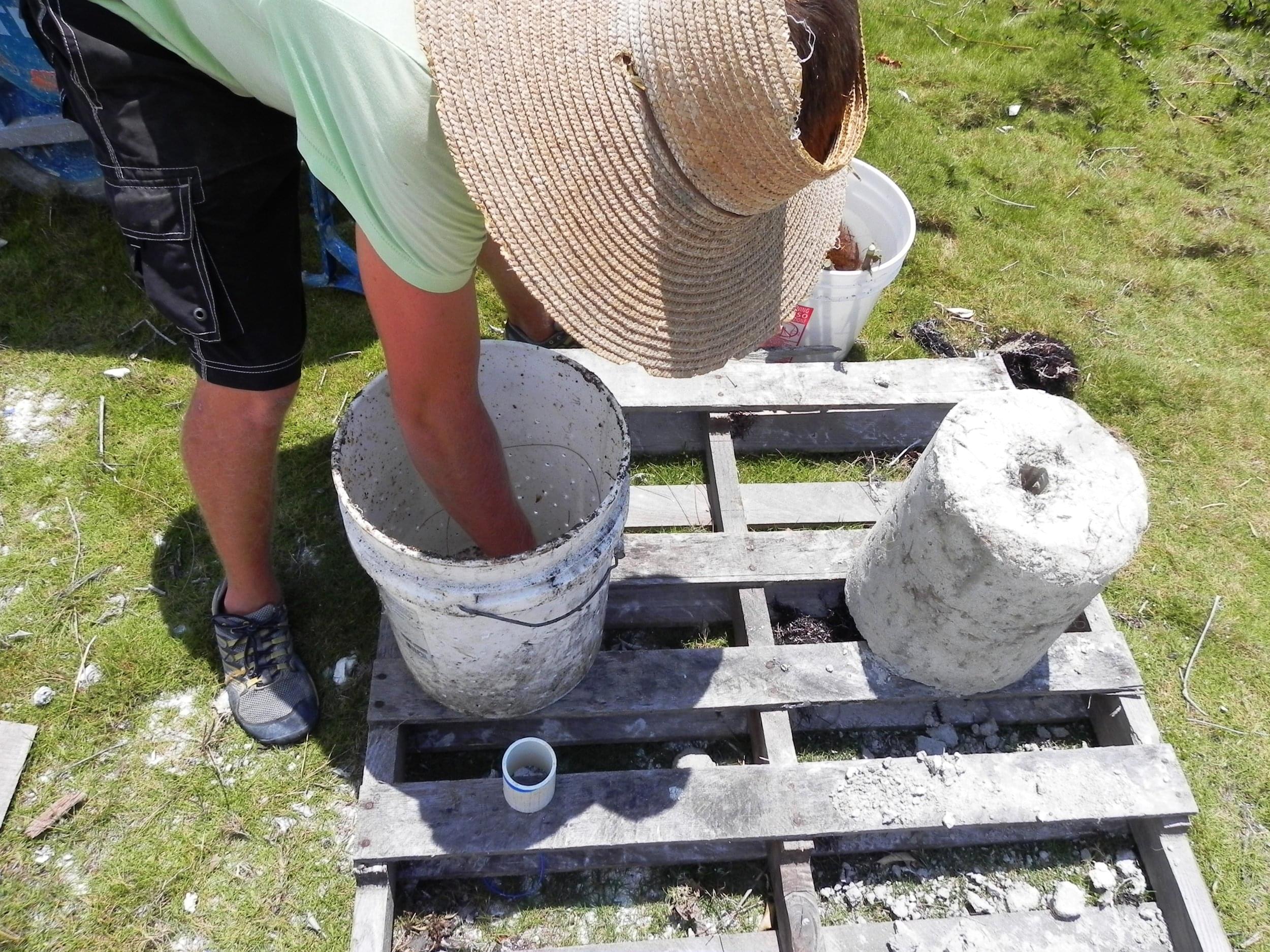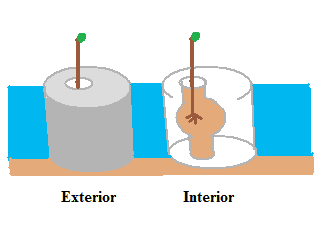 A new project focused on the rehabilitation of tidal mangrove creeks in South Eleuthera has been put into action by the Flats Ecology and Conservation Program. A part of this project is the establishment of a red mangrove nursery in the creek on campus. Armored cultivator pots have been built to house the young mangrove propagules which will be transplanted to areas that would benefit from the reestablishment of a mangrove forest once prop roots start to grow.
A new project focused on the rehabilitation of tidal mangrove creeks in South Eleuthera has been put into action by the Flats Ecology and Conservation Program. A part of this project is the establishment of a red mangrove nursery in the creek on campus. Armored cultivator pots have been built to house the young mangrove propagules which will be transplanted to areas that would benefit from the reestablishment of a mangrove forest once prop roots start to grow. The initial plan for the armored cultivator pots was derived from a design used by the Mangrove Solutions Division of the Reef Ball Division. The cultivator pot acts as a growing medium for the propagule as it becomes established, and further acts as a protective shield once the young mangrove is transplanted to a predetermined area that would benefit from mangrove rehabilitation that may experience wave, wind, and tide action. We strive to use the highest percentage possible of locally sourced materials in the mixture and to include organic materials that provide nutrients to the plant as it grows. The mixture we have employed includes mud collected from the mangrove creek, sand, compost, shredded coconut husk, and Portland cement.
The initial plan for the armored cultivator pots was derived from a design used by the Mangrove Solutions Division of the Reef Ball Division. The cultivator pot acts as a growing medium for the propagule as it becomes established, and further acts as a protective shield once the young mangrove is transplanted to a predetermined area that would benefit from mangrove rehabilitation that may experience wave, wind, and tide action. We strive to use the highest percentage possible of locally sourced materials in the mixture and to include organic materials that provide nutrients to the plant as it grows. The mixture we have employed includes mud collected from the mangrove creek, sand, compost, shredded coconut husk, and Portland cement.
 A round cavity is on the inside of the armored cultivator pot and there is an opening at the bottom, both of which allow the roots to become established. There is also an opening at the top which allows the propagule to grow upwards. Propagules are being collected from a variety of mangrove stands in South Eleuthera, such as Page Creek and from the creek on campus. We hope to collect more propagules from creeks on the east coastline of Eleuthera because they experience higher energy levels due to their direct contact with the Atlantic Ocean which exhibits more wave and wind action than the Exuma Sound side. The hypothesis is that propagules collected from mangrove stands that must withstand more difficult growing conditions will grow to be stronger mangrove trees which will survive transplantation and will exhibit a successful reestablishment.
A round cavity is on the inside of the armored cultivator pot and there is an opening at the bottom, both of which allow the roots to become established. There is also an opening at the top which allows the propagule to grow upwards. Propagules are being collected from a variety of mangrove stands in South Eleuthera, such as Page Creek and from the creek on campus. We hope to collect more propagules from creeks on the east coastline of Eleuthera because they experience higher energy levels due to their direct contact with the Atlantic Ocean which exhibits more wave and wind action than the Exuma Sound side. The hypothesis is that propagules collected from mangrove stands that must withstand more difficult growing conditions will grow to be stronger mangrove trees which will survive transplantation and will exhibit a successful reestablishment.
Currently, 5 red mangrove propagules have been planted in armored cultivator pots in the creek on the Island School campus. More cultivator pots are being made each week. The aim is to have at least 20 propagules established in cultivator pots in the creek by the beginning of the summer. Growth of the propagules will be monitored regularly, as well as the water quality parameters in the creek. The mangroves will be ready for transplantation once prop roots have started to grow, which we estimate will take 18 months.
A number of neighbouring mangrove tidal creeks that have experienced either habitat fragmentation due to the construction of roadways or damage from storms have been identified as potential sites for mangrove rehabilitation. Further, high energy areas that require soil stabilization and that act as a wave- and wind-break, such as the jetty of rocks recently built on the perimeter of the Island School’s Boathouse Cut, will be used as test areas for the establishment of a mangrove forest. With the restoration of a healthy mangrove forest, the ecosystem will experience many benefits such as soil stabilization, carbon capture, coastal protection against waves and wind, refuge for juvenile fish, and the filtration of sea water.